
Brickfield Hill is a City of Sydney locality in the Sydney central business district, Australia. The name was used for the surrounding settlement serving the colony's growing need for bricks, and today is part of the suburb of Surry Hills. [1]

Brickfield Hill is a City of Sydney locality in the Sydney central business district, Australia. The name was used for the surrounding settlement serving the colony's growing need for bricks, and today is part of the suburb of Surry Hills. [1]

Brickfield Hill was granted to Samuel Hockley in 1810 by Governor Macquarie, where Hockley set up a butchery. [2] Hockley lived at Brickfield Hill until his death in 1859, where he was noted as one of the oldest colonists in Sydney. [3]
Brickfield Hill was a Sydney postal address until postcodes were introduced in 1967, and roughly covered the area between Sydney Town Hall and Central station.
The area was used for brick-making, hence the term, up until the 1840s when land values rose and merchant stores, warehouses, and housing became more prominent, although the area remained a relatively poor 'slum' area of the city. [4] [5]
In 1905, following the destruction of their Haymarket store by fire in 1901, Anthony Hordern & Sons opened their new Palace Emporium on Brickfield Hill, the construction of which involved the demolition of several houses including Samuel Hordern's birthplace. [6] [7] [8] [9] Following the demise of the Hordern retailing empire, the building was used by the New South Wales Institute of Technology Faculty of Business and later also Faculty of Law, from 1967 to 1984. [10] The building was controversially demolished in 1985–1986 and was eventually replaced by the World Square development. [11]

Civic is the city centre or central business district of Canberra. "Civic" is a common name for the district, but it is also called Civic Centre, City Centre, Canberra City and Canberra, and its official division name is City.
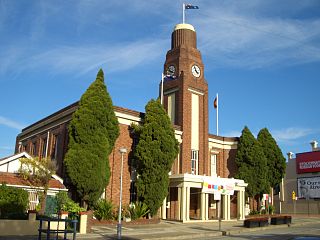
Petersham is a suburb in the Inner West of Sydney, in the state of New South Wales, Australia. Petersham is located 6 kilometres south-west of the Sydney central business district, in the local government area of Inner West Council. Petersham is known for its extensive Portuguese commercial offerings, with many Portuguese businesses and restaurants, although only 156 (1.9%) of the population was actually born in Portugal.
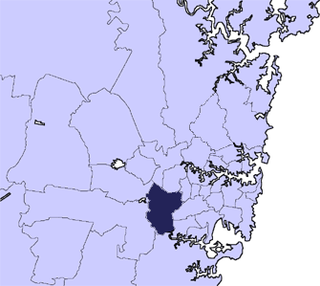
The City of Bankstown was a local government area in the south-west region of Sydney, Australia, centred on the suburb of Bankstown, from 1895 to 2016. The last mayor of the City of Bankstown Council was Clr Khal Asfour, a member of the Labor Party.

The City of Canterbury was a local government area in the Inner South-West region of Sydney, New South Wales, Australia. The council area was within the northern part of the Parish of St George above Wolli Creek and The M5 but below The Cooks River. The city was primarily residential and light industrial in character, and was home to over 130 nationalities. With a majority of its residents being born overseas, the council marketed itself as the "City of Cultural Diversity." First incorporated as the Municipality of Canterbury in 1879, the council became known as the City of Canterbury in 1993.

Waverley Council is a Local government area in the eastern suburbs of Sydney, in the state of New South Wales, Australia. First incorporated on 16 June 1859 as the Municipality of Waverley, it is one of the oldest-surviving local government areas in New South Wales. Waverley is bounded by the Tasman Sea to the east, the Municipality of Woollahra to the north, and the City of Randwick in the south and west. The administrative centre of Waverley Council is located on Bondi Road in Bondi Junction in the Council Chambers on the corner of Waverley Park.
The New South Wales Rugby League premiership was the first rugby league football club competition established in Australia and contributor to today's National Rugby League. Run by the New South Wales Rugby League from 1908 until 1994, the premiership was the state's elite rugby league competition, parallel to Queensland's first-class league, the Brisbane Rugby League.

The NSW Cup, currently known as the Knock-On Effect NSW Cup for sponsorship reasons, is a rugby league competition for clubs in New South Wales. The competition has a history dating back to the NSWRFL's origins in 1908, starting off as a reserve grade competition, and is now the premier open age competition in the state. The New South Wales Cup, along with the Queensland Cup, acts as a feeder competition to the National Rugby League premiership. The competition is the oldest continuous rugby league competition in the Australia.
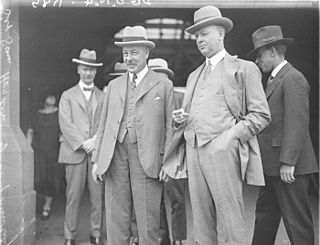
Sir Samuel Hordern was an Australian businessman, animal breeder and philanthropist. Born into the prominent Sydney trading family, Hordern directed the family company of Anthony Hordern & Sons from 1909 to 1926.

Anthony Hordern & Sons was a major department store in Sydney, New South Wales, Australia. With 52 acres of retail space, Anthony Hordern's was once the largest department store in the world. The historic Anthony Hordern building, which was located on a block bounded by George Street, Liverpool, Pitt and Goulburn Streets, on what was a small hill called Brickfield Hill in the Sydney central business district, was controversially demolished in 1986, to make way for the World Square development.
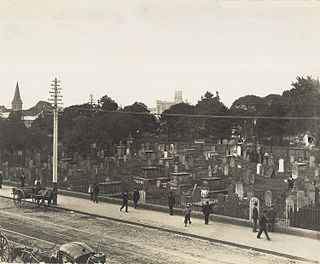
The Devonshire Street Cemetery was located between Eddy Avenue and Elizabeth Street, and between Chalmers and Devonshire streets, at Brickfield Hill, in Sydney, Australia. It was consecrated in 1820. The Jewish section was used from 1832. By 1860, the cemetery was full, and it was closed in 1867.

A coffee palace was an often large and elaborate residential hotel that did not serve alcohol, most of which were built in Australia in the late 19th century.
Royal Melbourne Golf Club is a 36-hole golf club in Australia, located in Black Rock, Victoria, a suburb in southeastern Melbourne. Its West and East courses are respectively ranked number 1 and 6 in Australia. The West course is ranked in the top-five courses in the world. Founded 133 years ago in 1891, it is Australia's oldest extant and continually existing golf club. Unlike many metropolitan golf venues, The Royal Melbourne Golf Club has a capacity for 15,000 spectators.
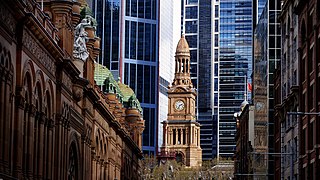
The architecture of Sydney, Australia’s oldest city, is not characterised by any one architectural style, but by an extensive juxtaposition of old and new architecture over the city's 200-year history, from its modest beginnings with local materials and lack of international funding to its present-day modernity with an expansive skyline of high rises and skyscrapers, dotted at street level with remnants of a Victorian era of prosperity.
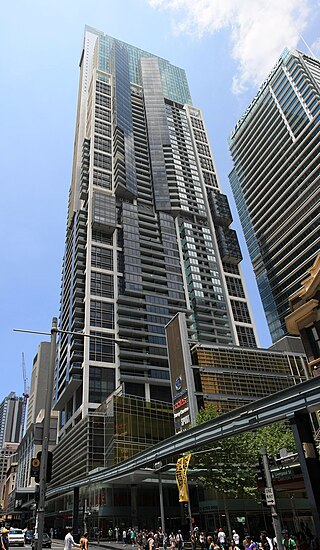
World Square is a large shopping centre and urban development in the Sydney Central Business District.[1]
Percy Grose Hordern was an Australian businessman, politician and a member of the New South Wales Legislative Council for the Labor Party. Hordern was a member of the influential Hordern family and for many years ran a drapery business.

The UTS Library provides support for teaching, learning, and research needs for the students, teachers and staff of University of Technology Sydney (UTS). The building is located in Building 2 next to the UTS Tower and opposite Central Park on Broadway, across Levels 5 - 9 within UTS Central. The main entrance to the new UTS Library is on Level 7 of UTS Central. It is accessible by a double helix staircase, escalators, or lifts. The UTS Library also has study spaces, academic support, and services across various levels of UTS Central.
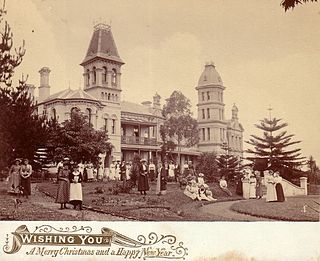
The Hordern family is an Australian retailing dynasty.

The Canterbury Town Hall was an Australian municipal town hall located at 322 Canterbury Road in Canterbury, a suburb in the Inner West of Sydney, New South Wales. It was built in 1889 in the Victorian Free Classical architectural style by architect W. H. Monckton, and was officially opened on 11 April 1889 by the Prime Minister of New South Wales, Sir Henry Parkes. The Town Hall was the seat of Canterbury Municipal Council from 1889 to 1963. When the council moved to a new purpose-built administration centre on Beamish Street in Campsie, a recognition of the change in economic importance of Campsie, the town hall was quickly disposed of by Council and demolished, being replaced by a service station. Today the Town Hall site is part derelict and part paint shop.
Wilton Park is a heritage-listed farm located at Wilton Park Road in the south-western Sydney settlement of Wilton in the Wollondilly Shire local government area of New South Wales, Australia. It was possibly designed by Albert Bond and built in 1892. It was added to the New South Wales State Heritage Register on 2 April 1999.
The Athenaeum Theatre was an entertainment venue at 610 George Street on Brickfield Hill, Sydney, between Liverpool and Bathurst streets. For most of existence it was a venue for screening films and live acts, including lectures, but not live theatre, concerts or musicals.